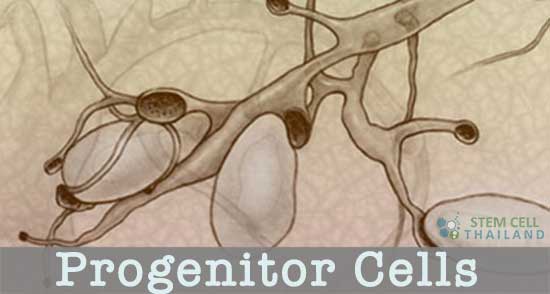Progenitor cells are the interim oligopotent cell formed during the differentiation process from stem cell state to the target cell variant.
Progenitor cells are a subtype of stem cells that are more differentiated than pluripotent stem cells but still have the ability to differentiate into a limited number of cell types or lineages. Unlike pluripotent stem cells, which can differentiate into virtually any cell type in the body, progenitor cells are more lineage-restricted. Progenitor cell manipulation encompasses a range of techniques designed to exploit these cells’ potential for therapeutic and research purposes.
About Progenitor cells
Here are some ways in which progenitor cells can be manipulated in the lab:
- Isolation and Expansion: Progenitor cells can be isolated from various tissues and then expanded in culture. Growth factors and other specific conditions can be used to enhance their proliferation and maintain their undifferentiated state.
- Directed Differentiation: By exposing progenitor cells to specific combinations of growth factors, chemicals, or other stimuli, they can be directed to differentiate into specific cell types.
- Gene Editing: Techniques like CRISPR/Cas9 can be used to modify the genes within progenitor cells. This can be for the purpose of studying gene function, developing disease models, or correcting genetic defects for potential therapeutic use.
- Cell Transplantation: Progenitor cells can be transplanted into organisms (including humans) for the purpose of tissue repair or regeneration. For instance, hematopoietic progenitor cells, which give rise to various blood cell types, can be transplanted to re-establish blood formation in patients who have undergone chemotherapy or radiation.
- Drug Screening: Progenitor cells can be used as models to screen for drugs or compounds that might influence cell behavior, differentiation, or survival.
- Creation of Disease Models: Progenitor cells derived from patients with specific diseases can be used to create in vitro disease models. These models can then be used to study disease mechanisms or test potential therapies.
- Coculture Systems: Progenitor cells can be grown in coculture with other cell types to study cell-cell interactions, which can influence progenitor cell behavior and differentiation.
- Exosome and Secretomes: Progenitor cells produce and release exosomes and a range of soluble factors.
Challenges in Progenitor Cell Manipulation:
- Purity of Cell Populations: Ensuring that a culture consists purely of progenitor cells, without contamination of other cell types, can be challenging.
- Tumorigenicity: Particularly with manipulated or extensively cultured cells, there’s a potential risk that the cells might form tumors when transplanted.
- Immune Rejection: Like all cell therapies, transplanted progenitor cells can be recognized as foreign by the recipient’s immune system and be rejected.
- Efficiency: Achieving efficient differentiation into the desired cell type or ensuring the intended genetic modification occurs without off-target effects can be challenging.
- Regulatory and Ethical Concerns: The use of progenitor cells, especially in the context of gene editing or transplantation, can raise regulatory and ethical concerns that need to be addressed in clinical applications.
Manipulating progenitor cells offers significant potential for therapeutic and research applications, but it’s essential to recognize and address the associated challenges. Multipotent progenitor cells are not classified under a cell category because their capacity to renew is relatively small, as opposed to stem cells that have the capability to divide infinitely like immortal strands. The stem cell center of Thailand includes progenitor cells in all cardiac stem cell treatments to help develop muscle tissue to help to repair heart valve failure, as well as to create new blood vessels for the heart in a process known as angiogenesis.

